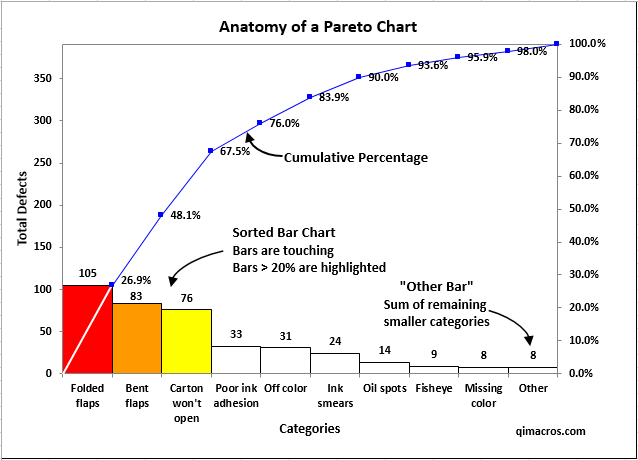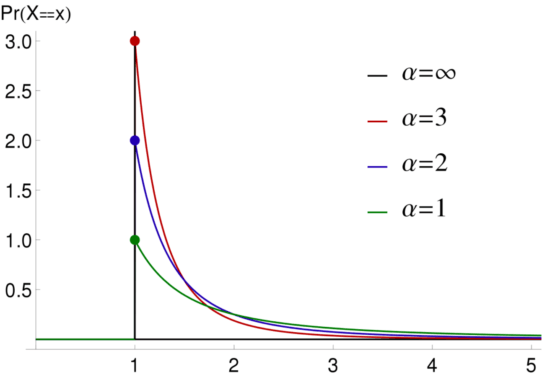

In this case, the sheer numbers work against you spending time only helping manage and improve the few great workers. By helping your “good” salespeople become better, you are more likely to reap greater results than by dedicating the same management effort to helping the fewer “great” salespeople become terrific. However, this proposed implementation of Pareto’s Principle to management is flawed, because it overlooks the fact that 80 percent of your time should be spent doing what is really important, or most likely to deliver the greatest return. Its supporters claim that since 20 percent of your employees likely produce 80 percent of your results you should focus your limited time in management of only that 20 percent – the so-called superstars. Lectures/seminars) suggests that we interpret Pareto's Principle in ways that would create a new approach, sometimes termed Superstar Management. If anything in the list of activities and action items has to fall by the wayside – left undone – be sure it isn’t listed in that critical 20 percent.Ī more recent application or implementation of management theory that’s been making the rounds for a few years (both in books and When the fire drills surrounding the “crisis of the day” begin to eat up precious time, remind yourself of the critical 20 percent you need to focus on. Thus, it’s critical that we identify and focus on those things. Those tasks in the 20 percent very likely will produce 80 percent of our results. Of all the tasks performed throughout the day, one could say (based on Pareto’s Principle) that only 20 percent really matter. The value of the Pareto Principle in management is in reminding us to stay focused on the “20 percent that matters”. The formula appears to work in both directions. And 20 percent of your workers will cause 80 percent of your problems, while another 20 percent of your personnel will deliver 80 percent of your entire production.

At the same time, it’s likely that 80 percent of your revenues will be the result of sales made by 20 percent of your sales staff.

Similarly, 80 percent of your inventory line items (Stock Keeping Units or SKUs) come from 20 percent of your vendors. You know 20 percent of your inventory on hand occupies 80 percent of your warehouse space. You can apply the 80/20 Rule to almost anything, from the science of management to the sciences of the physical world around us. It’s well known by Project Managers that 20 percent of work (usually the first 10 percent and the last 10 percent) consume 80 percent of the time and resources. In Juran's initial work, he identified 20 percent of product defects causing 80 percent of product problems. In Pareto's case, he found that roughly 20 percent of the people in his country dominated with 80 percent of the wealth. The 80/20 Rule means that in any set of things (workers, customers, etc.) a few (20 percent) are vital and many (80 percent) are considered trivial. Juran's “vital few and trivial many” observation (the principle that 20 percent of a set is generally responsible for 80 percent of a related result),īecame known as Pareto's Principle or the 80/20 Rule. The American Society for Quality has proposed renaming the Pareto Principle the “Juran Principle” because its universal application makes it one of the most useful concepts and tools of modern-day management. From that point on, the name “Pareto's Principal” stuck, perhaps because it may have sounded better than “Juran's Principle”. Juran recognized a universal principle he called “the vital few and trivial many.” In one of his early papers, a lack of precision on Juran's part made it appear as though he was applying Pareto's observations about economics to other areas of study. Working in the US in the 1930s-1940s, Dr. Observed similar phenomena in their own areas of expertise. While some may claim that Juran’s broad attribution of this scientific observation to Pareto is inaccurate, Pareto's Principle or “Pareto's Law” as it is sometimes called, can be a very effective business tool – one that can help us manage more effectively.Īfter Pareto made his observation about unequal wealth distribution and published his findings and formula, many others (in both science and business) Juran, a Quality Management pioneer, attributed the 80/20 Rule to Pareto, calling it Pareto's Principle. Pareto observed that roughly twenty percent of the people controlled or owned eighty percent of the wealth. In the very early 1900’s, an Italian economist by the name of Vilfredo Pareto created a mathematical formula describing the unequal distribution of wealth he observed and measured in his How the 80/20 Rule Helps Us be More Effective
#Pareto principle formula how to#
Pareto Principle - How to Apply It, and What to Avoid.


 0 kommentar(er)
0 kommentar(er)
